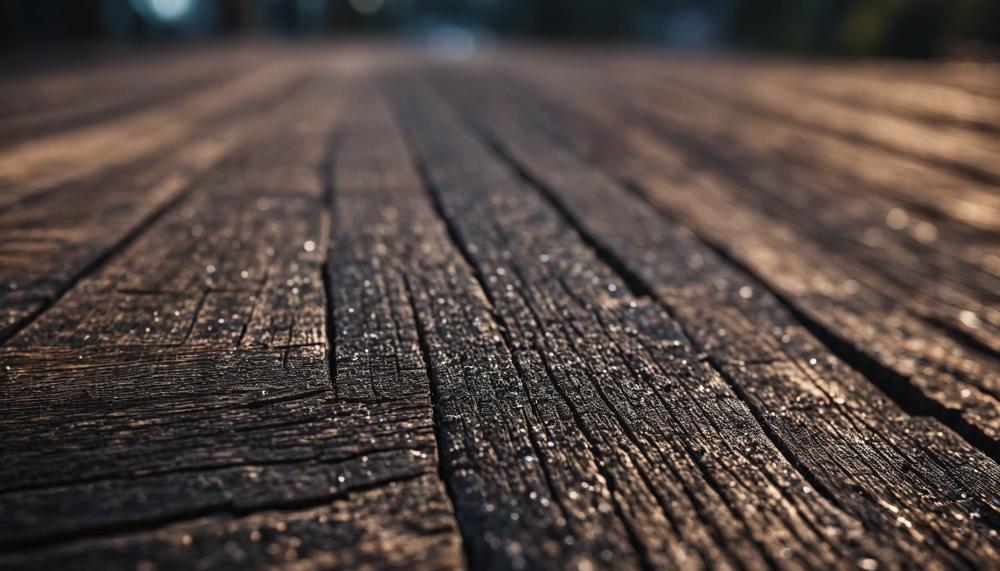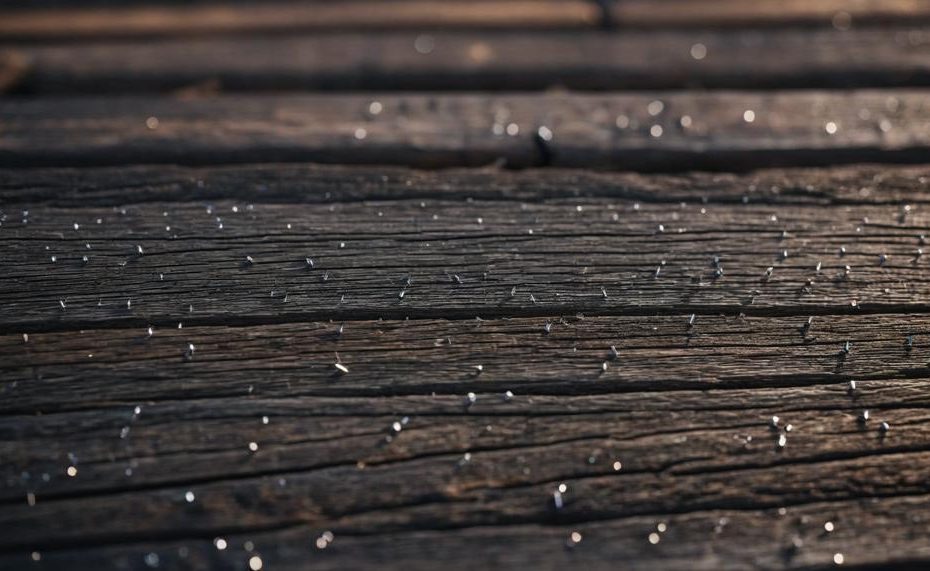Yes, disposing of wood with nails can be done safely and efficiently, but there are important steps to follow. No, you shouldn’t just toss it out without proper handling. This guide will walk you through the necessary steps to ensure you’re disposing of wood with nails correctly and responsibly.
Wood debris with nails poses a hazard if not handled properly. Whether you’re tackling a home renovation or simply clearing out some old materials, knowing the best practices for disposal is crucial. Let’s explore the best methods to dispose of wood with nails safely, while also considering eco-friendly options like repurposing.
Key Takeaways:
- Safety First: Always remove nails from wood before disposal to prevent injuries.
- Residential vs. Commercial: Understand that residential wood waste can often go out with your regular trash, but commercial debris has different rules.
- Burning Option: Burning wood can be an effective disposal method; use a magnet to collect nails from the ashes.
- Recycling Preparation: Before recycling wood, remove all metal parts like nails, screws, and bolts.
- Repurposing Ideas: Consider repurposing wood by removing stains or sanding it down for new projects.
- Disposal Techniques: Familiarize yourself with various disposal techniques to handle wood with nails appropriately.
By following these guidelines, you can ensure the wood is disposed of safely and responsibly, minimizing the risk of injury and environmental impact.
Contents
Reuse in Future Projects
Repurposing old wood pieces with nails can be a sustainable and cost-effective way to reduce waste and create unique projects. However, it is important to prioritize safety when handling wood with nails. Here are some tips for safely and effectively reusing wood with nails in future projects:
- Inspect the wood: Before using any old wood with nails, be sure to inspect it for any sharp or protruding nails. This can help avoid potential injuries while handling the wood.
- Remove all nails: It is crucial to remove all nails from the wood before using it in future projects. This can be done by using a hammer or pry bar to carefully remove the nails, or by using a magnet to extract them.
- Wear protective gear: When handling wood with nails, it is important to wear protective gear such as safety goggles, gloves, and a dust mask. This can prevent any injuries or exposure to harmful chemicals or dust.
- Avoid using treated wood: Treated wood contains harmful chemicals and preservatives that can be hazardous to your health. It is best to avoid using treated wood in future projects.
- Repurpose the wood: Instead of discarding old wood pieces with nails, try repurposing them by removing stains or sanding them down. This not only reduces waste but also creates unique pieces for your projects.
By following these techniques, individuals can safely and effectively reuse wood with nails in future projects while also promoting sustainability and reducing waste.
Composting
The short answer is: Yes, composting can be used to dispose of wood with nails, but the nails must be removed first.
To compost wood with nails in an eco-friendly way, follow these steps:
| Step<.-- |
Details | |
| 1 | Remove Nails | Use tools like pliers or a hammer to carefully extract nails from the wood to prevent metal contamination. |
| 2 | Shred Wood | Utilize a wood chipper to break the wood into small, manageable pieces for quicker decomposition. |
| 3 | Mix Materials | Combine the wood chips with other organic materials such as kitchen scraps, leaves, and grass clippings. |
| 4 | Maintain Heat | Regularly turn the compost pile to maintain high temperatures, enhancing microbial activity and speeding up the composting process. |
| 5 | Monitor Moisture | Ensure the compost pile remains moist but not waterlogged, aiding the decomposition process. |
For additional details on composting, you can refer to resources like the EPA’s Guide on Composting at Home.
Firewood
Disposing of firewood with nails can be tricky, but there are several eco-friendly ways to handle it:
- Separate and Dispose at Special Facilities: Ensure that wood waste with nails is segregated from other wood types and taken to a construction and demolition debris facility. These facilities are equipped to handle such materials safely.
- Remove Nails: Extract the nails from the firewood before disposal. This makes the wood safer for handling and simplifies the recycling process. Tools like claw hammers and nail pullers are handy for this task.
- Repurpose for DIY Projects: Use the de-nailed wood for do-it-yourself projects. This wood can be transformed into furniture, planters, or other useful items. Websites like Instructables offer great ideas for repurposing wood.
- Donate: Consider donating the wood to local organizations, schools, or community groups that can use it for construction projects or art installations.
- Recycling Programs: Check if your city has wood recycling programs. Some municipalities accept wood waste, including that with nails, and ensure it is recycled properly.
- Salvage Yards and Building Material Exchanges: Take the wood to salvage yards or building material exchanges. These places often resell or repurpose wood, giving it a second life.
- Composting: If the wood is untreated and chemical-free, it can be composted. Remove the nails first, shred or chip the wood, and add it to a compost pile, balancing it with other organic materials.
Wood Chips for Mulch
The best way to dispose of wood chips with embedded nails is to first separate the wood chips based on the type of wood—softwood or hardwood—and then follow appropriate disposal methods.
| Type of Wood | Disposal Method | Details |
| Softwood | Composting | Remove nails and compost in a sturdy container. |
| Hardwood | Local Waste Management | Contact local facilities for proper disposal or pick-up services. |
| Any | Repurpose or Donate | Reuse in DIY projects or donate to woodworking shops. |

Donation or Giveaway
One of the most effective ways to ensure proper disposal of wood with nails while benefiting others is to donate or give it away. Here are several methods:
| Donation Options | Details | Benefits |
| Local Schools and Community Centers | Useful for woodworking and art projects | Supports education and creativity |
| Woodworking Clubs | Material for enthusiasts to practice and create | Encourages skill development |
| Online Platforms | Freecycle, Craigslist | Connects with people in need |
| Habitat for Humanity | ReStores accept building material donations | Funds home-building projects |
| Local Theatres | Set construction materials | Supports the arts |
| Personal Projects | Garden beds, firewood | Practical reuse of materials |
| Wood Chips for Mulch | Chipping services turn wood into mulch | Eco-friendly disposal |
Safety Considerations
When disposing of wood with nails, it’s imperative to follow specific precautions to ensure the safety of yourself and others. Below are detailed steps and tips to guide you:
| Step | Action | Details |
| Remove Nails | Use proper tools | Before disposing of wood, remove all nails using a hammer, nail puller, or pliers. This reduces the risk of injury during handling and collection. |
| Wear Protective Gear | Safety first | Always wear gloves, safety goggles, and long sleeves to protect against potential punctures and splinters while handling wood with nails. |
| Dispose of Nails Separately | Use a sturdy container | Place removed nails in a durable container, such as a coffee can or a plastic jar, before discarding. This prevents accidental injuries during waste management. |
| Avoid Burning | Prevent toxic fumes | Never burn wood with nails, especially if treated, as it can release harmful chemicals. Instead, seek out recycling or disposal options. |
| Use Local Facilities | Contact local waste management | Check with your local waste management facility or recycling centre to understand the proper disposal procedures for wood with nails. Some facilities may have specific guidelines or programs for recycling wood. |
| Label Properly | Ensure clear communication | If disposing of wood in a bin or leaving it curbside, label it clearly to indicate the presence of nails. This warns sanitation workers and reduces the risk of injury. |
| Donate or Repurpose | Reduce waste | Consider donating wood to local organizations, such as schools or woodworking clubs, or repurposing it for personal projects. This can provide value to others and minimise waste. |
Conclusion
Disposing of wood with nails requires careful handling to ensure safety and environmental responsibility. Here are some best practices to keep in mind. Always remove nails from the wood to prevent injuries and simplify disposal. Residential wood waste can often be disposed of with regular trash, but commercial debris may require special handling.
Consider burning the wood and using a magnet to collect nails from the ashes. For recycling, all metal parts must be removed beforehand. Repurposing wood for new projects is an eco-friendly option, but ensure it’s untreated to avoid harmful chemicals. Composting untreated wood is another sustainable choice; remove the nails and shred the wood for efficient decomposition.





